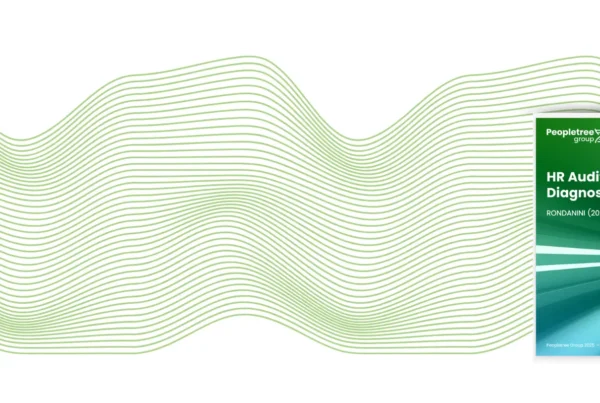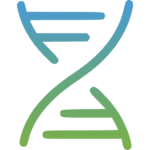Brett Mulder
Managing Partner | Merging people analytics and tech | Building People Ecosystems.
A Blueprint for Career Success
School and college provide a structured, predictable journey from early education to entering the workforce. Each year has a start and a finish, one step follows another. Then all of a sudden you find yourself an educated, tax paying member of society, and it’s around this time that the predictable journey can turn into the subway map of a city you’re visiting for the first time!
There are many excellent resources available for career development. LinkedIn Learning offers a range of quality content to meet almost any development need. The Muse produces content that is consistently thoughtful and engaging. You could join an industry association, hire a career coach, or speak to your HR team about development opportunities within your company. These and many other resources are wonderful, and I encourage everyone to explore them. But, most of these assume you have a clear career path in mind.
Careers today are no longer linear. The days of a 50 years at the same company with a gold watch are gone. Careers have changed for the better, skills are more transferable than ever and options for each of us have grown.
Martin Sutherland, Founding Partner at Peopletree Group, spends a lot of time thinking about careers and professional growth. He’s advised C-Suite in Paris, designed executive team-building in Mexico, built competency models in Texas, and consults daily with our growing client base in 47 countries. Recently, he was asked to design a high-impact mentorship program for CEO successors at a Fortune 500 company. I’m pleased to say this program is now in its third successful year and is expanding to more positions and markets. One key conversation he designed for mentees during this program focused on career planning.
We’ve called it the Integrated Career & Development Planning Framework, and I’m excited to share it with you now. You can use this as a manager with someone in your team, as an HR Business Partner for your employees, or for yourself as a way to figure out your next step for growth. Feel free to adapt the framework to suit your needs, and the only cost is your feedback once you’ve used it. You can reach out to Martin or I directly on LinkedIn. Our DMs are open!
P.S. The full workbook we created is a 10-page walkthrough including the template and forms you should complete as you go (and it’s available for anyone who wants a copy). Scroll to the bottom of this article to download it.
Ok, let’s get into this…
Understanding the ICDP Framework
The ICDP Framework integrates several concepts to help individuals align career aspirations with life goals. At its core, the framework borrows from the Japanese concept Ikigai, which means ‘reason for being.’ Ikigai is about finding the intersection between what you love, what you are good at, what the world needs, and what you can be paid for.
Step 1: Identifying Your Ikigai

Image 1: Ikigai and Careers – An intersection of professional success and personal fulfilment
The first step in the ICDP Framework is to identify the elements of your Ikigai:
- What You Love: Reflect on your passions and interests. What activities or tasks make you feel energized and engaged?
- What You Are Good At: Consider your skills and strengths. What are you really great at, and what do others often ask you for help about?
- What the World (or your company) Needs: Think about the broader impact. What issues or needs in your organization or community are important to you?
- What You Can Be Paid For: Assess your marketable skills. Write them down if you need to. What are employers willing to pay you for, and how does this line up with your passions and strengths?
By identifying these four elements, you can start to see where they overlap and form the foundation for a career that is both fulfilling and rewarding. As this article from Psychology Today reminds us “Individuals who believe that their life is worth living were less likely to die than counterparts without this belief” and since we spend so much of our time at work, this time we spend should be as damn awesome as possible!
Step 2: Multiple Futures
The future is uncertain. It always has been, and it always will be. That’s how the future works. The ICDP Framework encourages you to create multiple career scenarios. This helps you prepare for different possibilities and stay adaptable.
- Scenario Planning: Imagine various future scenarios based on different probabilities and prepare plans for each. For example, what steps would you follow if you wanted to take on a leadership role within the next five years? What if you decided to pivot to a different industry? What if you moved countries?
Step 3: Design Your Career Canvas

Image 2: Career Canvas – A Model for Career Planning
One of our favourite business books is Business Model Generation from Strategyzer. We’ve used it with the management team at Peopletree Group to help us redefine our own business model, it’s full of great ideas in practical format. Careers are not that different from businesses, so we took inspiration from their value proposition canvas, and adapted that for careers. Have you ever considered, what is your personal, professional value proposition?
This is a visual tool that helps you map out your career strategy. Here’s how to create your Career Canvas; (if you completed Step 1, you’ll have some of this done already!)
- What I Love: Note down your passions and interests. Think about activities that energize and engage you.
- What I’m Good At: List your core skills and achievements. Highlight your strengths and areas of expertise.
- Successes I’ve Had: Document your past successes and accomplishments. These showcase evidence of your proven capabilities.
- My Value Proposition: Define what you’re offering, the problems you solve, and why you are the best person for the job. Describe what success looks like for you.
- What is Increasing in Value: Identify areas where value is growing in your field.
- Where is it Increasing in Value: Pinpoint where these growing values align with your interests and skills. This could be a geography, department within your company or a list of other companies.
- What the World Needs: Recognize the broader needs in your organization or industry that resonate with you.
Step 4: Develop Your Career Board of Directors
Just as companies have boards of directors for guidance and oversight, your career can benefit from having a personal advisory board. You may only need one or two of these, and some roles might overlap, but your career board could include:

Image 3: Career Canvas – Who is on your board of directors
Step 5: Implementation using the 70/20/10 Development Model
We’ve all hear the words: “Planning without execution are like dreams without action” and career development is no different.
The 70/20/10 model is a powerful approach to learning and development that balances practical application with social and theoretical knowledge. It was developed in the 1980’s by the Centre for Creative Leadership, and it’s one of of the most effective models to use.
- 70% Experiential Learning: Get experience through challenging assignments and on-the-job learning. Speak to your manager or HR about this, share your plan with them and ask for support.
- 20% Social Learning: Learning from peers, mentors, and networks.
- 10% Formal Learning: Attending workshops, courses, and training programs.
Sustaining Your Career Growth
There are always corporate ladders to climb, but sustainable career growth is about more than just the ladder. The most successful people value continuous learning, adapting to change and maintaining a healthy balance between work and life. If you manage people, be a custodian of their growth; encourage development, inclusivity and adaptability within your team. Be a champion of a development culture and contribute to Building People Ecosystems.
If you’ve read this far, thanks for reading. This model was created from the thousands of hours we’ve spent with companies around the world implementing and scaling career management to their employees, in a personalized and meaningful way. We hope that you will find inspiration in this model and it will create value for your professional journey.
Your Next Steps for Career Growth are a Click Away
Download the full Integrated Career and Development Planning framework.







